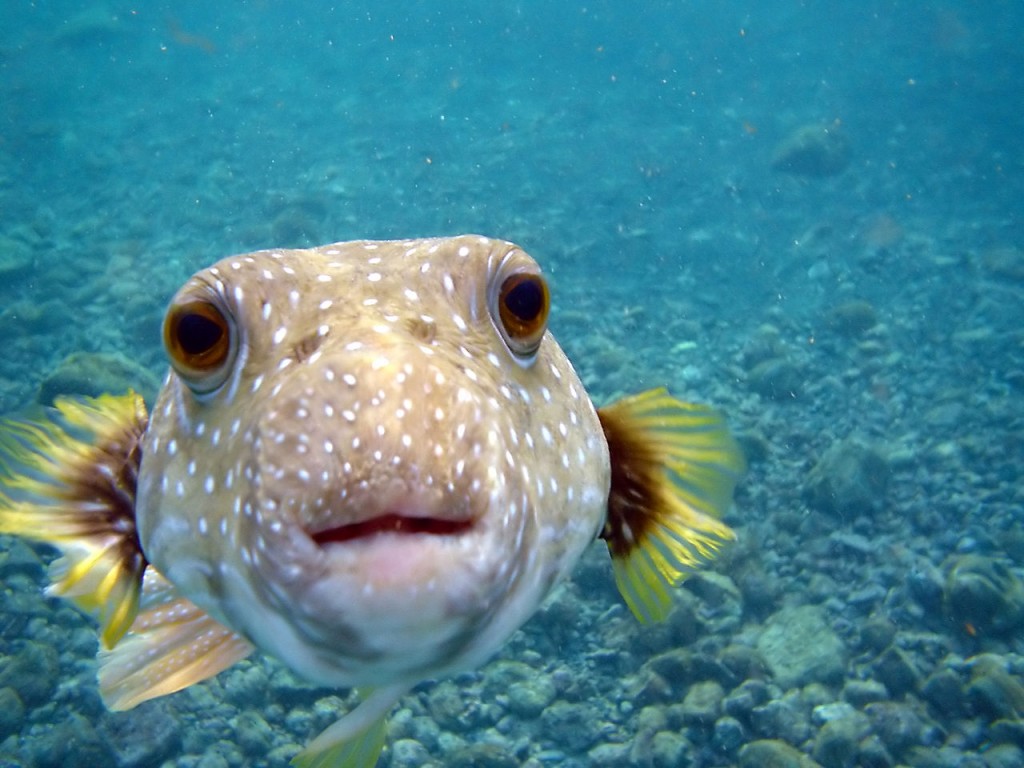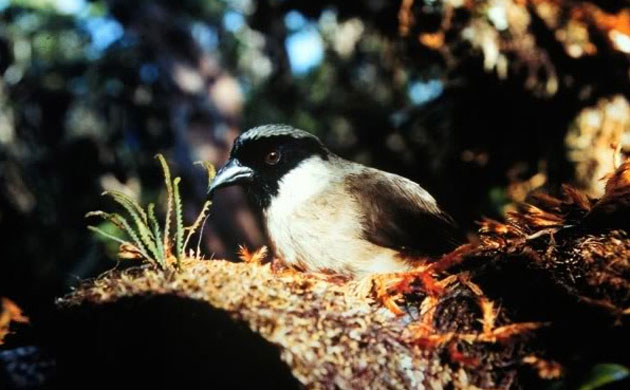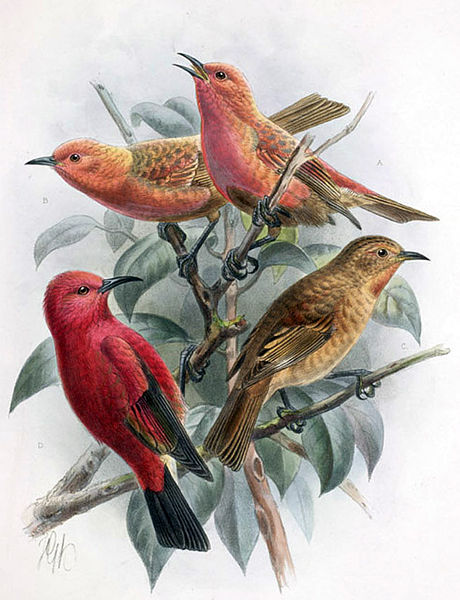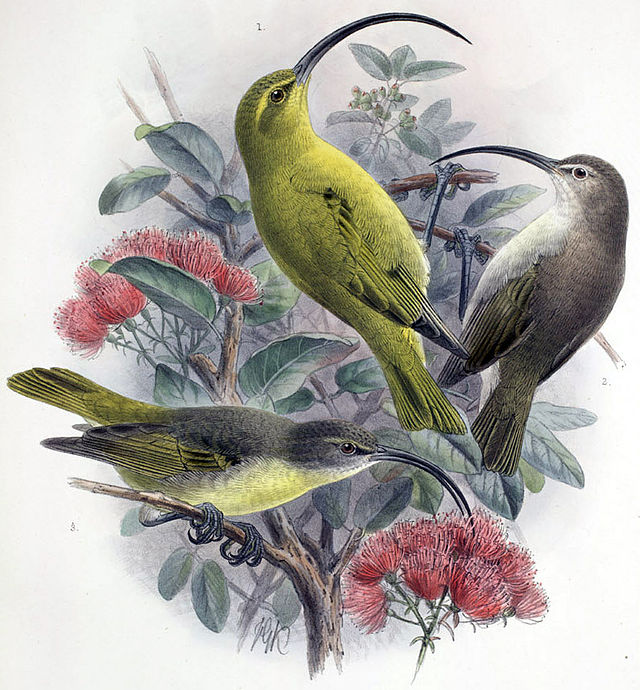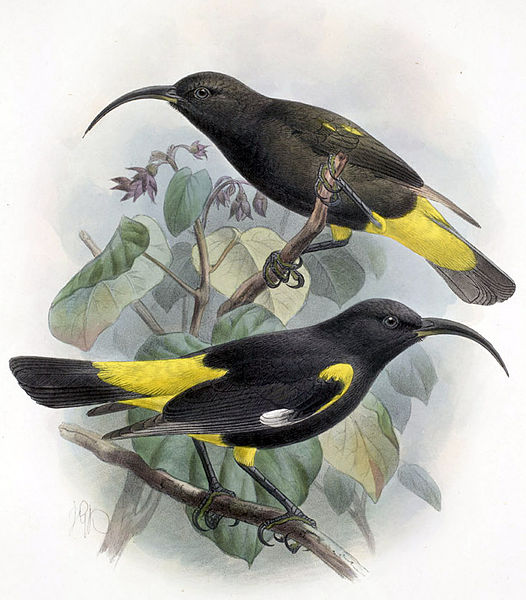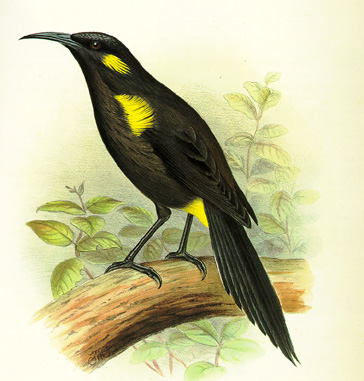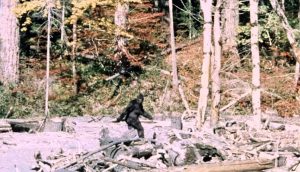Hawaii: Extinction Capital Of The Universe
Hawaii has already lost a lot of species over the years, which is the normal way of things, but many more animals are lining up to breathe their final breath. Hawaii has been named “the extinction capital of the world”, I guess somewhere had to be. Already half of its 140 historically recorded native bird species have disappeared for good. Many of these species died out within living memory.
Hawaii takes up around 0.2% of the US of A’s area but accounts for over 25% of their endangered species. So what’s the big problem over there? The biggest threat is invasive species. Hawaii’s wildlife developed over millions of years in near perfect isolation. The plants and animals sit neatly in their separate niches, carved out over the aeons. If you get an influx of other plants and animals that like the look of the native species’ niche you’ve got a battle on your hands.
Captain Cook arrived in Hawaii for the first time in 1778. He was the first European to set foot on the island. He took with him rats and cats which the other mammals of the island had not yet been introduced to. Rats and cats are now commonplace on the islands, having grown fat from the flesh of naive native animals. It’s difficult to blame Cook for his error though; it would be difficult to explain to an 18th Century seaman what a big problem these introduced species would become.
Islands where predatory mammals were either rare or non-existent during evolution suffer harshly when they are finally introduced. A good example is New Zealand which had no indigenous mammals (other than bats) before explorers visited. Their bird life had evolved to be ground based and not at all nervous of other animals. They had no need to be. So when rats and cats came along these flightless, naive birds were decimated. On top of predation, new species of plants and animals bring new diseases which can also wreak havoc.
The problem doesn’t just lie with rats and cats though. Early Polynesians used to use some bird species’ feathers as currency and early explorers would kill birds to sell on to collectors which became a fairly lucrative enterprise.
Another factor effecting extinction speed is a drop in genetic variation. If a species population drops substantially, so does its genetic diversity, and on the flip side inbreeding goes up. These genetic factors play a part in speeding up the demise of a species; as offspring become less biologically fit they’re less likely to survive and less likely to breed.
Who Cares About Extinction?
It’s a fair question, extinction is part of the natural order of things. It’s been going on for as long as life itself has. So why should we care if some weird random bird dies out? I’ll be honest, earth and humanity have a startling myriad of issues that are probably more pressing than the protection of the rare crested bonobo snail or whatever: child labour, torture, disease, war, famine. All of these things deserve more of our attention than a particular species of snail.
The problem of extinction however is linked with so many other factors, that if we started to address them extinction would slow down any way: if we stopped chopping down so much forest there’d be more places for these dwindling critters to live. If we ate more vegetables and cut down on our meat intake we’d have less need for farm land and therefore more forest. Switching from fossil fuels to alternative energy sources would slow the pollution that’s mucking up the air and waterways of the planet. Use less plastic, or more biodegradable plastics so that fish and other water based beasts don’t have to deal with tiny portions of plastic everywhere that they hang out. Etc, etc, etc…
Extinction rates are an indicator of the health of the entire system of life. All life is interconnected, and I don’t mean that in some kind of hippy-dippy way, I mean it really genuinely is. Worms turn the soil and irrigate it, they are eaten by birds, the birds eat berries and poo out the seeds in a handy portion of fertiliser, the plant grows and sustains some herbivores, the bees feed from the plant and the bee goes onto be a snack for a lizard etc etc. It’s not mumbo jumbo to think of the earth as one living breathing organism.
It’s true that life is strong and ingenious, it can sidestep issues and change tack in order to survive. But as the options of alternative food sources or niches drops, how long can they keep dodging? We don’t know what the ramifications to us humans would be if life started grinding to a halt. But I for one don’t want to find out.
Here’s a massive oversimplification to round things off: The air we breathe is only breathable by humans because plants remove much of CO2. Many plants are dependent on other species of insect or bird to pollinate or spread their seeds. If the things that pollinate and spread the plants die off, what next? What if the chain breaks? For me the biggest worry is simply that we don’t know what the implications of this increase in extinction are.

